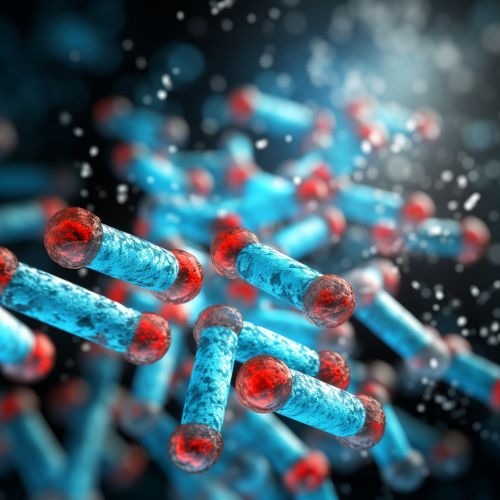Telomere Shortening
Introduction
Telomeres are the protective caps at the ends of chromosomes that play a crucial role in maintaining genomic stability. They are composed of repetitive DNA sequences and associated proteins that prevent the degradation of the chromosome ends. Telomere shortening, a process that occurs naturally as cells divide, is a critical factor in aging and disease.


Structure and Function of Telomeres
Telomeres are composed of repetitive sequences of DNA, typically a six-nucleotide sequence (TTAGGG in humans), that are repeated hundreds to thousands of times. They are bound by a set of proteins known as the shelterin complex, which protects the telomeres from being recognized and processed as DNA damage.
The primary function of telomeres is to solve the end-replication problem, a limitation of DNA replication in eukaryotic cells. The enzymes that duplicate DNA, DNA polymerases, cannot replicate the ends of chromosomes. Therefore, with each round of cell division, the chromosomes would shorten, leading to the loss of vital genetic information over time if not for the presence of telomeres.
Telomere Shortening
With each cell division, telomeres shorten due to the end-replication problem and the processing of the chromosome ends. This is a normal part of aging, but it can be accelerated by various factors, including oxidative stress, inflammation, and lifestyle factors such as poor diet and lack of exercise.
When telomeres become critically short, they can no longer protect the chromosome ends. This triggers a DNA damage response, leading to cellular senescence or apoptosis (programmed cell death). Therefore, telomere shortening is a key factor in cellular aging and the onset of age-related diseases.
Mechanisms of Telomere Shortening
Telomere shortening occurs through several mechanisms. The primary mechanism is the end-replication problem, but other factors can contribute to telomere shortening, including oxidative stress, DNA damage, and inflammation.
End-Replication Problem
The end-replication problem is a limitation of DNA replication in eukaryotic cells. DNA polymerases require a primer to initiate DNA replication, and this primer is removed at the end of replication. However, the DNA polymerase cannot replace the primer at the very end of the chromosome, resulting in a small loss of DNA with each round of cell division. This is known as the end-replication problem.
Oxidative Stress
Oxidative stress, caused by an imbalance between the production of reactive oxygen species (ROS) and the ability of the cell to detoxify these reactive intermediates, can lead to DNA damage and accelerate telomere shortening. ROS can cause breaks in the DNA strand, and these breaks are more likely to occur in the G-rich telomeric DNA.
DNA Damage and Inflammation
DNA damage and inflammation can also contribute to telomere shortening. DNA damage can result from various sources, including ultraviolet radiation, ionizing radiation, and certain chemicals. Inflammation can lead to the production of reactive oxygen and nitrogen species, which can cause DNA damage and accelerate telomere shortening.
Consequences of Telomere Shortening
Telomere shortening has significant consequences for cellular function and organismal health. When telomeres become critically short, they can no longer protect the chromosome ends, triggering a DNA damage response. This can lead to cellular senescence or apoptosis, both of which contribute to aging and the onset of age-related diseases.
Cellular Senescence
Cellular senescence is a state of permanent cell cycle arrest. Senescent cells remain metabolically active but are unable to divide. They also secrete a variety of factors, known as the senescence-associated secretory phenotype (SASP), which can promote inflammation and tissue remodeling. Cellular senescence is a key factor in aging and the development of age-related diseases.
Apoptosis
Apoptosis, or programmed cell death, is another potential outcome of critical telomere shortening. Apoptosis is a tightly regulated process that eliminates damaged or unnecessary cells. However, excessive apoptosis can lead to tissue atrophy and dysfunction, contributing to aging and disease.
Age-Related Diseases
Telomere shortening is associated with a variety of age-related diseases, including cardiovascular disease, Alzheimer's disease, and certain types of cancer. In these diseases, telomere shortening may contribute to disease onset or progression by promoting cellular senescence or apoptosis.
Telomere Lengthening
While telomere shortening is a normal part of aging, cells have mechanisms to lengthen telomeres and maintain their function. The primary mechanism is through the action of the enzyme telomerase, which adds telomeric DNA to the ends of chromosomes.
However, telomerase is not active in most adult human cells. It is primarily active in stem cells and germ cells, which need to maintain their telomeres for continued cell division. In other cells, telomeres gradually shorten over time.
Role in Cancer
Cancer cells, unlike most normal cells, can reactivate telomerase to maintain their telomeres and continue dividing indefinitely. This is one of the hallmarks of cancer and a key factor in its development and progression. However, the relationship between telomere length, telomerase activity, and cancer is complex and not fully understood.
Conclusion
Telomere shortening is a critical factor in cellular aging and the development of age-related diseases. Understanding the mechanisms of telomere shortening and its consequences can provide insights into the biology of aging and disease and may lead to new therapeutic strategies.
